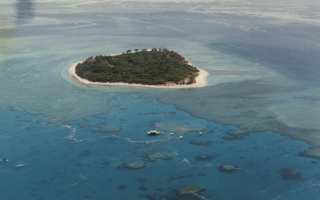
This is Lady Musgrave Island, it's a coral cay near Bundaburg. The camping ground is on the far side of the island. The water in the foreground is part of a large lagoon. The large "boat" is actually a permanent pontoon which the tourist boats come to.
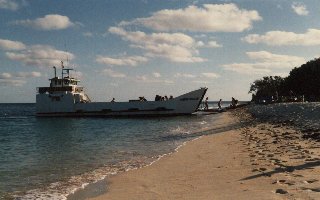
We travel to the islands either on a barge like this one or by boat. The barge can beach land whereas the boat can't and therefore we have to complete the last few hundred meters by dingy.
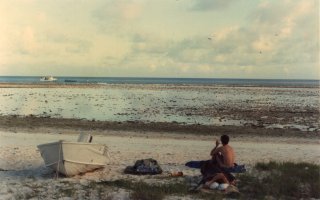
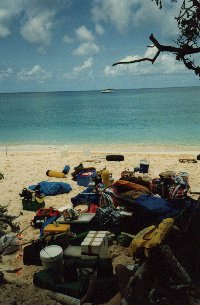 This
is some of our gear. We have to bring everything including fresh
water. All our camping gear, diving gear, personal stuff and a two
weeks supply of food amount to a big pile.
This
is some of our gear. We have to bring everything including fresh
water. All our camping gear, diving gear, personal stuff and a two
weeks supply of food amount to a big pile.
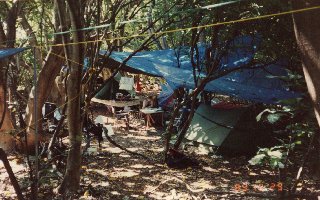

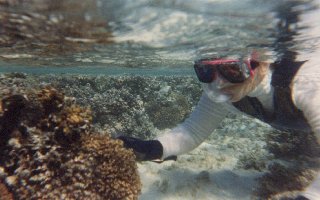 This is the shallow reef flat. The coral in the deeper water is
much better.
This is the shallow reef flat. The coral in the deeper water is
much better.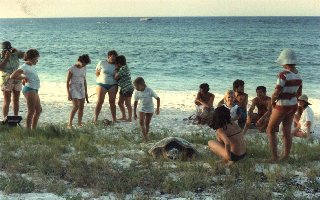 A nesting turtle, very few come up during the day like this one.
A nesting turtle, very few come up during the day like this one.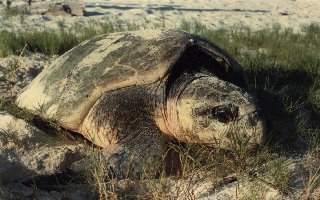 A female turtle digs a nest in the sand, she may lay a hundred
eggs and lay several times during the nesting period.
A female turtle digs a nest in the sand, she may lay a hundred
eggs and lay several times during the nesting period.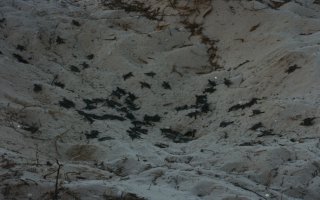 Turtle hatchlings.
Turtle hatchlings.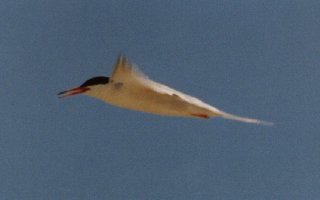
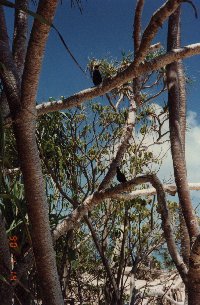 Almost
all the birds live on a diet of fish. Many will spend all day out
at sea fishing. This photo was taken on Tryon where Noddies don't
seem to nest but are often found resting it the trees.
Almost
all the birds live on a diet of fish. Many will spend all day out
at sea fishing. This photo was taken on Tryon where Noddies don't
seem to nest but are often found resting it the trees.
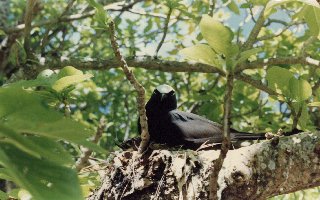
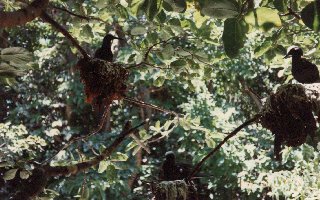
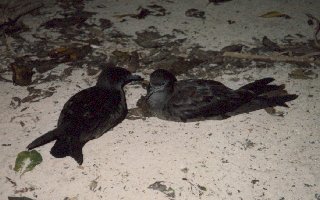
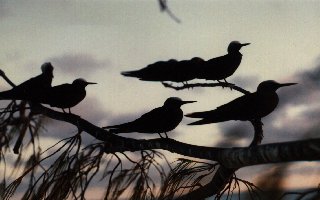
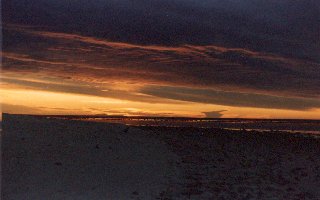
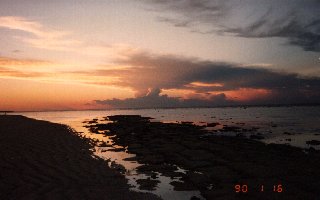
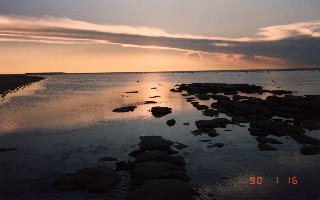

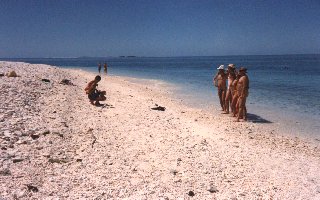 The
nudies attempting to chase away the day-trippers. This is the
eastern end of Musgrave Isl. The beach is coral rubble and broken
shell (mostly clam). The beaches on the more northerly islands are
finer. The sand on these islands is coral sand
(Calcium-carbonate)- unlike the "sand" islands to the
south (Frazer,Morton etc) where the sand is volcanic in origin
(silicon dioxide).
The
nudies attempting to chase away the day-trippers. This is the
eastern end of Musgrave Isl. The beach is coral rubble and broken
shell (mostly clam). The beaches on the more northerly islands are
finer. The sand on these islands is coral sand
(Calcium-carbonate)- unlike the "sand" islands to the
south (Frazer,Morton etc) where the sand is volcanic in origin
(silicon dioxide).